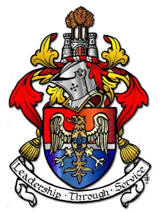| Royal
Ancestors from
Sweden and Denmark |
|
|
Royal Ancestors from Sweden and Denmark INTRODUCTION During Roman times, the eastern half of the Scandinavian peninsula was inhabited by two great Germanic tribes, the Suiones, or Swedes, in north Svealand, and the Gothones, or Goths, in south Gothia. These tribes although united in religious beliefs were generally at war with one another. Previous to the 10th century, details of Swedish history is obscure. The Viking Age, 800-1050, was characterized by a marked expansion, which in the case of Sweden was mainly directed eastwards. Many Viking expeditions set off from Sweden with the mixed purpose of plunder and trade along the coasts of the Baltic Sean and the rivers that stretched deep into present-day Russia, where Swedish Vikings established trading stations and short-lived principalities, like that of Rurik at Novgorod. The Vikings active in the east traveled as far as the Black and Caspian Seas, where they developed trading links with the Byzantine Empire and the Arab dominions. At the same time, Christianity first reached Sweden with the mission of Ansgar, who visited the country from the Carolingian Empire in the ninth century. Olak Skutkonung (r. 993-1024) was the first Swedish king to become Christian. However, it was not until the eleventh century that Sweden was Christianized. Even the old pagan Nordic religion survived far into the twelfth and thirteenth centuries through the incorporation of Finland into the Swedish kingdom after several crusades. Numerous remains discovered by archeologists attest the existence of prehistoric man in Denmark. Knowledge of the early ages of Danish civilization derives largely from myths and sagas. Some historians believe the Danes, who had inhabited the south part of the Scandinavian peninsula in the first centuries after Christ, migrated in the 5th and 6th centuries to the peninsula of Jutland and the adjacent islands in the Baltic Sea. In the following centuries they expanded westward; within a century after their first raid (787) on the British Isles, the Danes became master of part of England. Under King Harold Bluetooth, who reigned from 940-985, the Danes became a united people and the Christianization of their realm was begun. Harold’s son, Sweyn Forkbeard, king of the Danes from about 985-1014, conquered England in 1013. The Danes ruled England until 1035. Sweyn’s son, Canute, king of England (1016-1035) and of Denmark (1018-1035) completed the Christianization of Denmark. Under Eric IX (r. 1150-1160), who later became the patron saint o Sweden, Swedish power was strengthened. Eric invaded Finland and forced Christianity upon those he conquered; during the subsequent two centuries Finland was completely subjugated by the Swedes. Eric was defeated and killed in 1160 by Prince Magnus Henrikson of Denmark who made n unprovoked attack on Sweden, the first of a long series of wars between the two countries. In the later part of the 12th and the early part of the 13th centuries, the Danes expanded to the east. They conquered the greater part of the northern and southern littorals of the Baltic Sea, establishing a powerful and prosperous realm about twice the size of modern Denmark. This era of expansion was also the epoch in which feudalism in Denmark attained its zenith; the monarchy became more powerful and wealthier than it had ever been; the nobility, comprising principally large landowners, prospered; and the clergy were rich and politically influential. Large masses of the once-free peasantry of the country were reduced to serfdom. Efforts on the part of the monarchy in Denmark, in the second half of the 13th century, to tax the church, precipitated a protracted struggle for supremacy in Denmark between the kings of Denmark and the popes. Growing discord between the Danish crown and nobility also led to a struggle, in which the nobility, in 1282, compelled King Eric V to sign a charter, called the Danish Magna Charta. By the terms of this charter, the Danish crown was made subordinate to law and the Danehof, or national assembly, was made an integral part of the country’s administrative institutions. In the 13th and 14th centuries feudalism became a controlling influence in Sweden, and a wealthy aristocracy replaced the waning power of the throne. In 1395 the Swedish nobles forced Albert III to renounce the throne, which was given to Margaret, Queen of Denmark and Norway. In 1397 Margaret effected the Union of Kalmar, by which the three Scandinavian kingdoms, Denmark, Norway, and Sweden were united under a single sovereign. The union, which endured for more than a century, was characterized by constant dissension and wars between Danes and Swedes.
Denmark and Sweden
|

